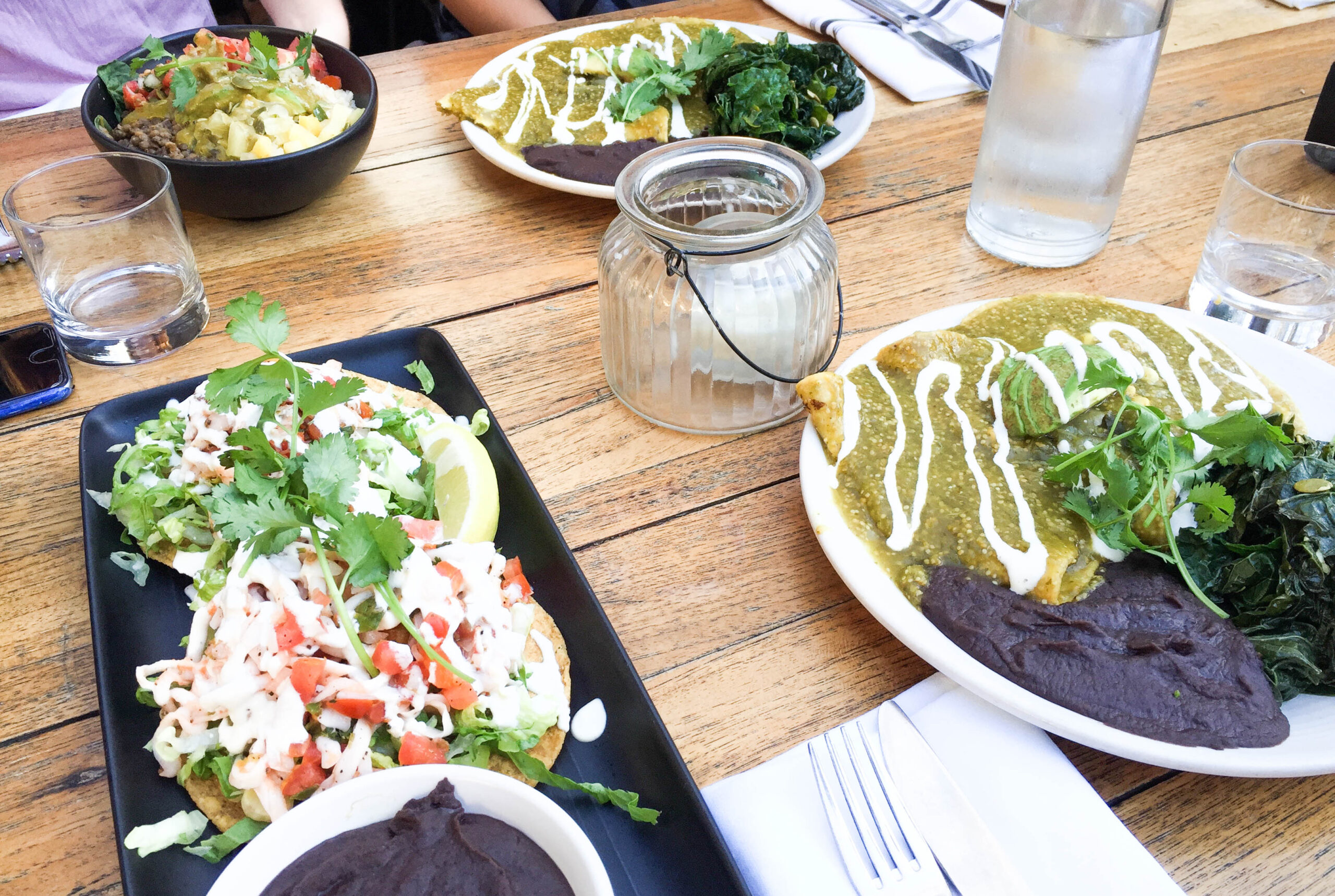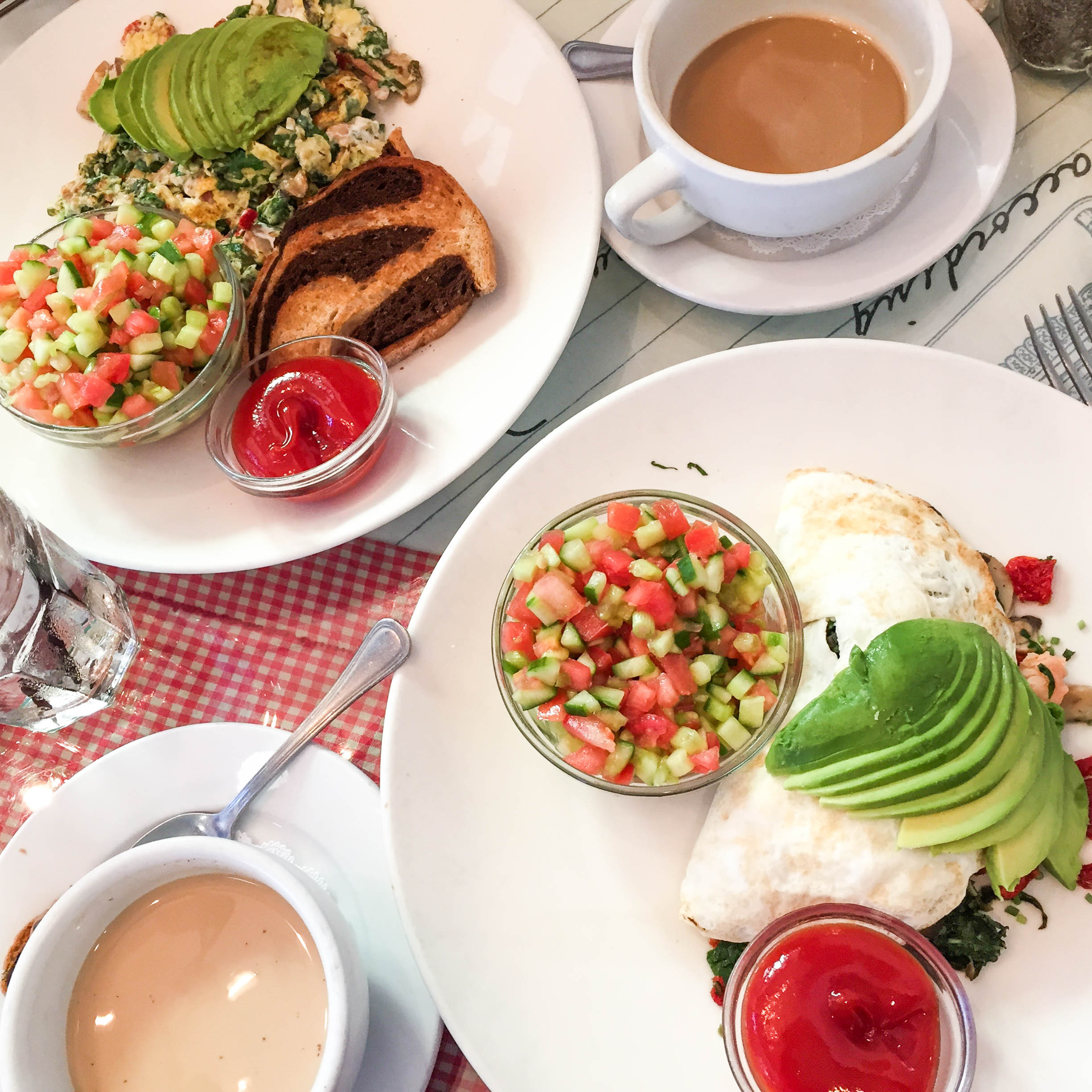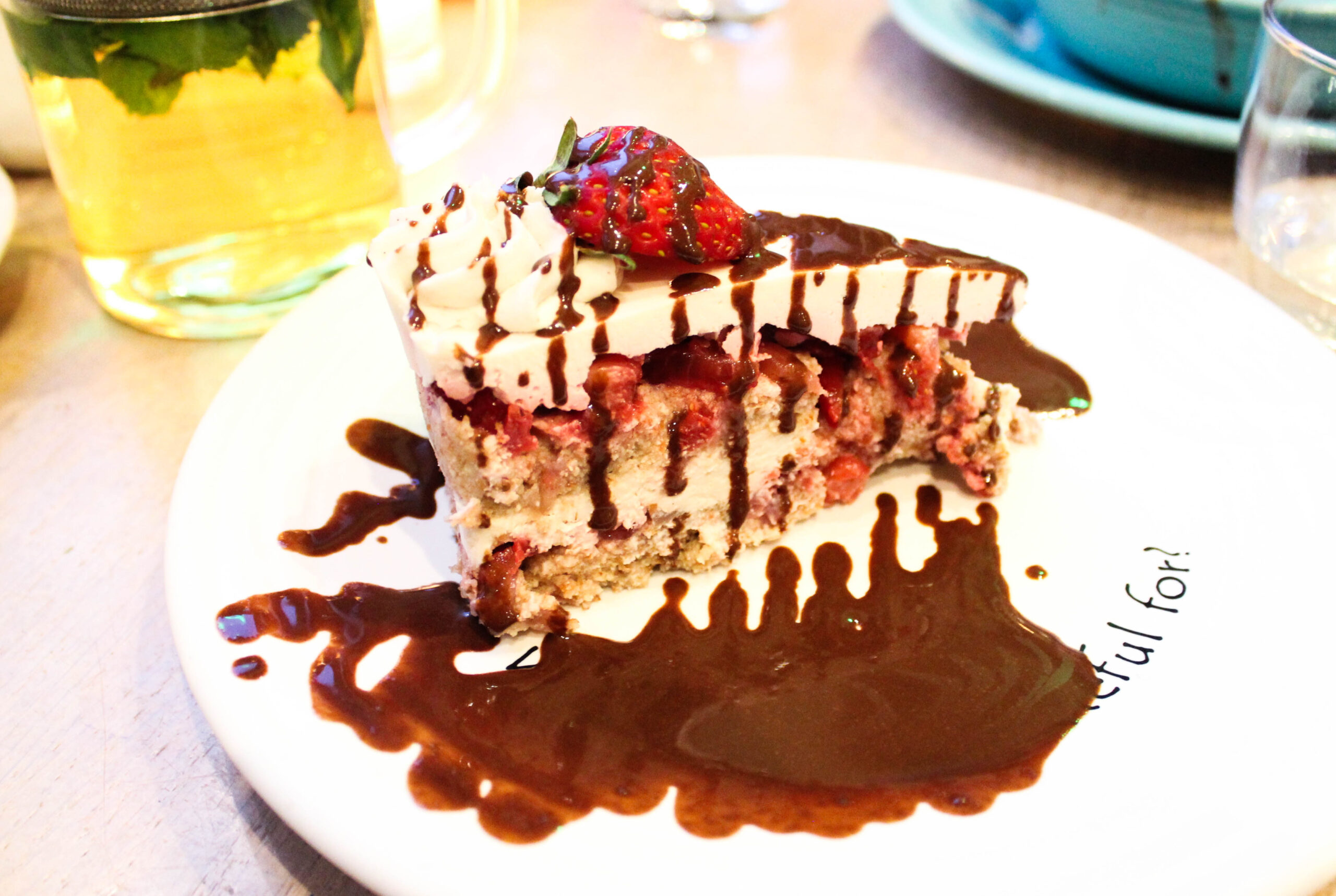
I’m a total foodie. Yes, I do adore cooking, but I loooooove to eat out. Always have, always will. I keep a running list of at least 100 restaurants on my phone that I’m plotting to test out next. New suggestions are always welcome.

A lot of people are surprised by how much I like to eat out at restaurants. When it comes up, the response is usually, “Can you even eat there?” or, “How can you eat out so often with all of your food restrictions?”
Well, my friends, it’s really not as hard as it seems. There was definitely an adjustment period when I first discovered I could no longer eat gluten or dairy, and it continues to be an adjustment period as I discover more foods that I am allergic to. However, NOTHING WILL STOP ME FROM EATING ALL OF THE DELICIOUS FOODS I WANT AND ENJOYING LIFE.

I have a system for ordering out, as I’m sure most people with food allergies do, so I thought I’d share mine in case you’re on the struggle bus and need some help navigating the restaurant scene. These recommendations are mainly targeted toward gluten and dairy allergies/intolerances, but they can be applied to any food that you’re allergic to. #AllergyProbz
- Hop on the Internet and check out the menu beforehand. Honestly, I can usually eat everywhere I want. The only places I absolutely can’t order from are places I would never want to eat at anyway, like Burger King (if that’s even a “restaurant”). Even so, check the menu early on to get a general idea of what the food is like and to prepare yourself for what you might want to order. If EVERYTHING is dairy-filled or gluten-heavy, then it will probs be easier if you just find a new place. If not, you can probably still make it work with the strategies described next.
- Don’t be afraid to be high maintenance. THIS IS THE BIG ONE. You need to be careful of what you’re putting into your body. Doing what you need to do for your health is something you should never be ashamed of. If your friends are embarrassed of how particular you are when you order, then get new friends. Just joking. But not really. If it makes you feel better, alert the person you’re eating with of your complicated ordering procedures before you go. But if they already know about your food intolerances/allergies, they probably won’t be surprised.

At first, I was embarrassed about having to ask so many questions when I ordered food at restaurants, but that made me forget to ask as many questions as I should have, which led to some seriously unfortunate consequences when I accidentally got gluten-ed or dairy-ed. After those experiences, I learned to not give a shit about how annoying I might seem to everyone around me when I order out. It really doesn’t matter what anyone else thinks – waiters or companions. I DON’T WANT TO GET SICK FROM MY FOOD.
- Immediately alert your waiter of your food allergies. You never know what kind of server you’ll have. Sometimes they will be no help whatsoever, and sometimes they will be gluten experts or Celiac themselves and will have amazing suggestions about what you should order. Either way, it’s important to let them know so they can tell the chef.

- Ask if there is a gluten-free menu. When you tell your server about your allergies, they’ll usually automatically give you the allergy-friendly menu if they have one, but in case they don’t, just ask.
- Don’t assume your waiter knows anything about which foods have allergy-containing ingredients and when there might be cross-contamination. Usually they do their best, but at most restaurants the waiters won’t be as knowledgeable about avoiding ingredients as is necessary to be totally safe. Ask direct questions about EVERYTHING. I’ve been to many restaurants where the waiters don’t even know what gluten is.

Even when servers are knowledgeable, they sometimes slip up. They’ve got a lot of people to serve and please, and there’s a lot going on in a restaurant! Take responsibility. There are always the servers that mean well and seem like they know everything but still don’t cover all the bases. For example, I’ve learned the hard way that a lot of people think butter is not dairy…
- Ask about cross-contamination. This is the more specific version of #5. At high-quality restaurants, the waiter will bring this up as soon as you mention your food allergies/intolerances. The BEST restaurants have an entire menu that tells you what foods are technically gluten/dairy/soy/whatever-free but might have cross-contamination. Like, some have an entire binder with alllll the info. You might be surprised at what has been cross-contaminated. For example, I could never figure out why the cauliflower from one of my favorite restaurants always made me horribly sick, but later on I learned it was cooked in the same fryer as gluten-containing foods. Moral of the story: foods that are typically harmless might not be when eating out.
- If you have an intolerance to something, don’t be afraid to lie and say it’s an allergy. I HATE lying, but this is an exception. This lie will not hurt anyone. From my own experience, I’ve found that unfortunately waiters don’t take people as seriously when they have a food intolerance as they do when they have a food allergy. I could write a novel about how annoying that is, but it’s just what tends to happen.
- Ask the waiter about a specific dish, not about the entire menu. You will completely, and unfairly, overwhelm your waiter if you say something like, “I’m allergic to gluten. What can I eat here?” Don’t expect your server to literally go through the entire menu with you. Ideally, know which dish you want and ask if that specific dish might be a problem in any way. Always have a few back-up choices to ask about, as well.

- Always ask, “How is that cooked?” When people first go gluten-free or dairy-free, a lot of times they forget to ask this because they’re so worried about avoiding the obvious offenders – bread, pasta, milk, etc. However, a lot of restaurants cook their meats/eggs in butter or add gluten somewhere in the cooking process (often unnecessarily, for reasons I will never really understand). Prime example: IHOP puts gluten in all of their omelettes. Also, if you’re like me and are super picky about the cooking oils used (vegetable oils – EW), then it’s extra important to ask how things are cooked to make sure they’re not throwing in any of that in there. Salmon cooked in olive oil is NOT the same as salmon cooked in canola oil.
- Don’t be afraid to mix and match in order to invent your own entree. Heather Dubrow once said that she sees a menu as a list of ingredients, and I couldn’t have said it better myself. There is no shame in taking the protein from one dish, the veggies from another, the sauce from another, and creating your own customized meal. Not all restaurants will do this, but most will because they’re usually scared of accidentally feeding you something that might result in a bad Yelp review. And always take advantage of the sides! A lot of times I order the protein from one of the entrees and order a bunch of sides to create my own meal. Much more fun.

- Be prepared to pay a tad more. If a restaurant isn’t willing to let me mix around entree items to create my own plate, I’m more than willing to buy multiple dishes and just pick what I want off of each one. The “pick a protein and a few sides” strategy can also sometimes end up being slightly more expensive than a normal entree, as well. However, I would much rather pay more to get enough to eat and eat foods that agree with my body than be starving or make myself sick. Your health is worth it.
- Check salad dressings and lattes. I find that these are the most common slip-ups. SO many salad dressings contain gluten. Chai lattes and green tea lattes are often made from powder mixes, and many of these, sadly, contain gluten.
- If you have multiple food intolerances/allergies, always double check yourself. Sometimes it can be exhausting just finding one gluten-free option. When that happens, you might get so excited about victoriously finding something you can eat that you almost forget about your second or third food allergy. For example, sometimes I figure out what I’m ordering, I’m all happy because it’s gluten-free, and then at the last minute I realize I forgot to check for the dairy! And vice versa. So check yo’self.

Other general recommendations:
Go for “healthy” restaurants that are known for being allergy-friendly. This may seem obvious, but JUST SAYING. It makes things a lot easier. I’m not personally vegan, but I love eating at vegan restaurants because they’re almost always extremely allergy-friendly (the waiters know what’s in what, they have separate menus, they’re hyper-aware of cross-contamination, etc.) and they usually use better ingredients overall, anyways. Organic, locally-sourced ingredients are the best.

The safest things on the menu for me tend to be salads, entrees containing veggies and some kind of protein, omelettes/eggs for breakfast, and sides. I love me some sides. Even if it’s not listed, a lot of times you can get something that’s on the menu as part of an entree as a “side.”
DON’T BE SHY! Servers are usually extremely accommodating. They do not want to put your health at risk. If something seems sketchy or the chef/server “doesn’t know” if the food in question contains an ingredient you’re intolerant to, play it safe and avoid it.

This might seem like a lot, but it quickly becomes second nature. You’re about to become a pro if you’re not already.
If you want to learn even more about this topic and EVERYTHING related to the paleo diet for women, make sure you check out my online course, the Paleo Women Lifestyle Program!


